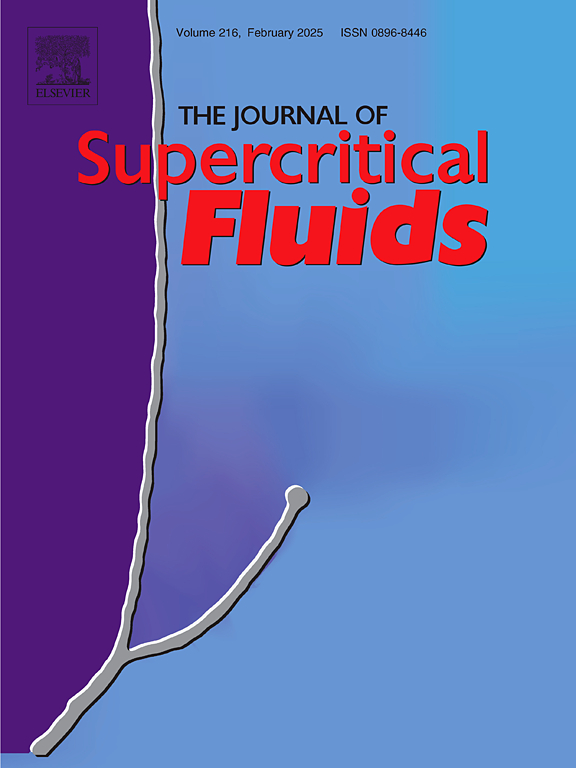New phase diagrams with anomalous region, supercritical solid-like state, liquid phase boundary, and dwij point
IF 3.4
3区 工程技术
Q2 CHEMISTRY, PHYSICAL
引用次数: 0
Abstract
A Gibbs free energy-based thermodynamic analysis for regular fluids reveals the extension of liquid-vapor (L-V) line, beyond the critical point, to a newly discovered “Dwij point” (DP). At DP, this line turns around and goes back to the melt-solid (S-L) boundary, which together with the S-L and L-V lines delimits the region of liquid/supercritical liquid-like (L/SCLL) state. Consequently, a thermodynamic “solid-like” state is identified, which exists between the L/SCLL and melt-solid lines. Moreover, beyond DP only two phases, gas and solid exist, with the transition occurring via supercritical gas-like and solid-like states. These findings, in conjunction with the anomalous region around the critical point lead to historic modifications to the phase diagram. Consequently, the new phase diagrams for nine fluids are presented. Although the extension of supercritical liquid-like/gas-like boundary for hydrogen is similar, variations do exist. These discoveries may reconcile the thermodynamic transitions and dynamic transitions, which occur beyond DP.
具有异常区、超临界类固态、液相边界和dwij点的新相图
基于吉布斯自由能的常规流体热力学分析表明,在临界点以外,液-汽(L-V)线延伸到一个新发现的“Dwij点”(DP)。在DP处,这条线掉头回到熔体-固体(S-L)边界,与S-L和L- v线一起划定了液体/超临界类液体(L/SCLL)状态区域。因此,确定了存在于L/SCLL和熔固线之间的热力学“类固体”状态。此外,在DP之外只存在两相,气相和固相,通过超临界类气态和类固态发生转变。这些发现,再加上临界点周围的异常区域,导致了对相图的历史性修改。因此,提出了九种流体的新相图。虽然氢的超临界类液/类气边界的扩展是相似的,但也存在变化。这些发现可能调和了发生在DP以外的热力学转变和动力学转变。
本文章由计算机程序翻译,如有差异,请以英文原文为准。
求助全文
约1分钟内获得全文
求助全文
来源期刊

Journal of Supercritical Fluids
工程技术-工程:化工
CiteScore
7.60
自引率
10.30%
发文量
236
审稿时长
56 days
期刊介绍:
The Journal of Supercritical Fluids is an international journal devoted to the fundamental and applied aspects of supercritical fluids and processes. Its aim is to provide a focused platform for academic and industrial researchers to report their findings and to have ready access to the advances in this rapidly growing field. Its coverage is multidisciplinary and includes both basic and applied topics.
Thermodynamics and phase equilibria, reaction kinetics and rate processes, thermal and transport properties, and all topics related to processing such as separations (extraction, fractionation, purification, chromatography) nucleation and impregnation are within the scope. Accounts of specific engineering applications such as those encountered in food, fuel, natural products, minerals, pharmaceuticals and polymer industries are included. Topics related to high pressure equipment design, analytical techniques, sensors, and process control methodologies are also within the scope of the journal.
 求助内容:
求助内容: 应助结果提醒方式:
应助结果提醒方式:


